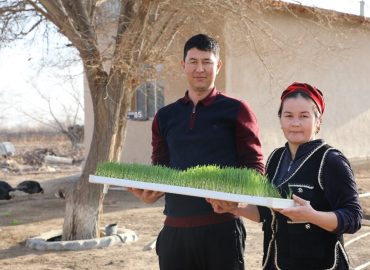Using LED Grow Lights
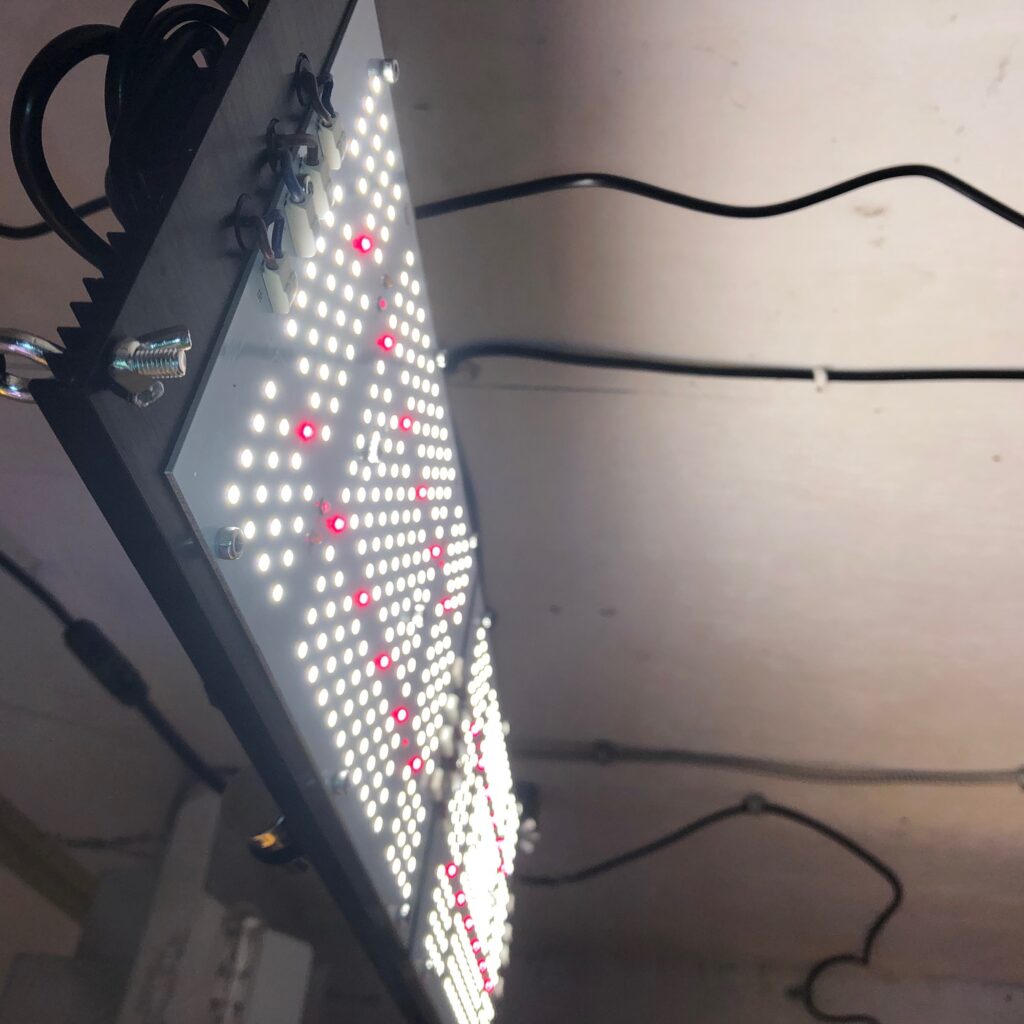
Using LED Grow Lights
What You Want to Know to Grow with LEDs
Using LED grow lights can make your harvests healthier and more efficient, however, there is more to having success using LED grow lights than just swapping them out with your existing lighting in a grow set up.
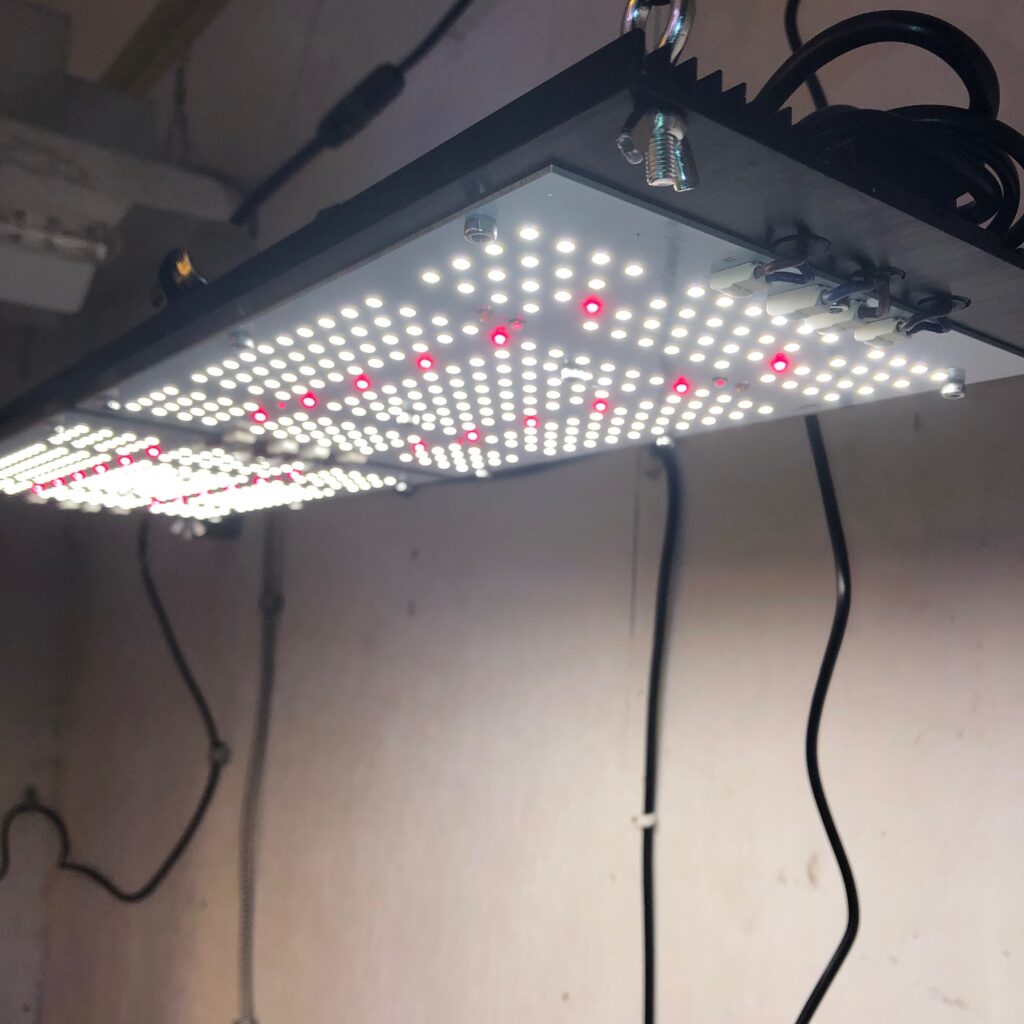
Above: Quantum Board LED Grow Light
However, a cooler and less intensive room may have your crop taking it a little too easy at times. It’s up to you to train your plants to work at higher levels while taking care not to stress or harm them. Plants with a higher metabolic rate will potentiate growth rates and yields.
Latest model LED grow lights can deliver great lighting for crops with a lot of advantages over traditional crop lighting sources like HPS, CMH, MH, etc. Some of the advantages include:
- Lower power draw
- Healthier growing environment
- Improved safety
- Less problems with pests or insects
- Higher crop quality
- Faster finishing times in flowering
- More yield per watt of power
- Tunable Spectrum
- No lamps to swap or replace
However, let us say here and now that using LED grow lights the same way you have used your other grow lights may limit the potential of your success–LEDs may not be the same animal you are used to running with.
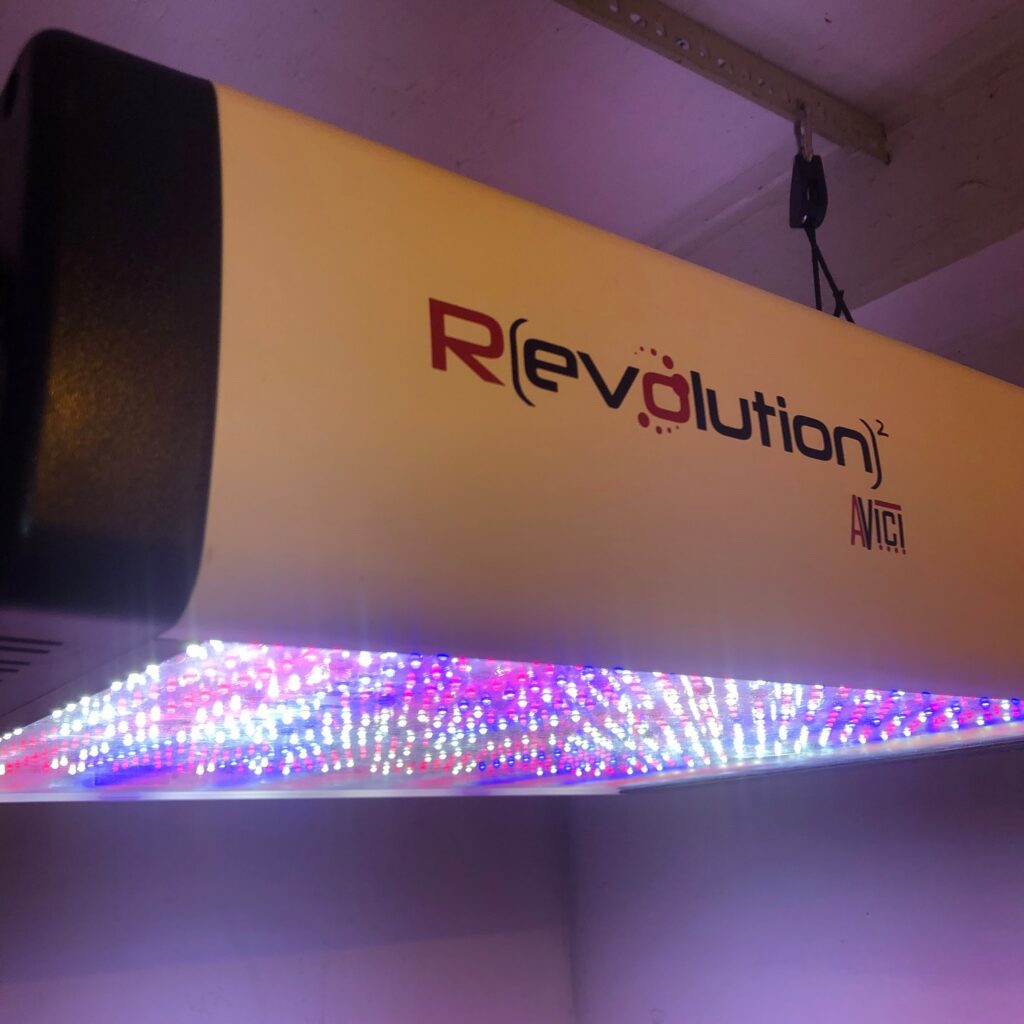
Above: When used with the RLC-1 Controller, the AVici High Output LED grow light has a completely tunable light spectrum
Comparing HPS to LED Grow Lights
When it comes to using LED grow lights in place of your HPS system, here’s some important stuff you need to know.
Light meters don’t always give you the full picture.
1000 uMols/sec/m2 from HPS and 1000 uMols/sec/m2 from LED are not the same thing. One of the lighting experts we consulted for this article said it best on the topic of HPS grow lighting:
“HPS for crop lighting is like a radio station (frequency) you are getting on your receiver but with poor reception–if you really crank it up you can hear things well enough to perform your dance”
Meaning, that while capable of delivering good yields and quality, growers need to over amplify HPS light sources (more wattage for light) for the area of coverage versus better tuned lighting sources (better spectrum for plants).
While an HPS light source is typically drawing more power to accomplish our example of 1000uMols/sec/m2 versus LED, it is BLASTING the plants with light–with a very significant portion in the green part of the spectrum–which is important, and we will discuss in some detail shortly. LED grow lights use less power to accomplish the same crop lighting value. That’s because of the more finely tuned spectrum produced by combining different LED chips, each with a highly specific spectral output. The LED chip combination is typically low in green with an emphasis on red and blue light. Quantum PAR light meters favor Red and Blue wavelengths–that’s what they are programmed to do. As a result, it’s easier to generate higher PAR values with less wattage using LED grow lights versus HPS.
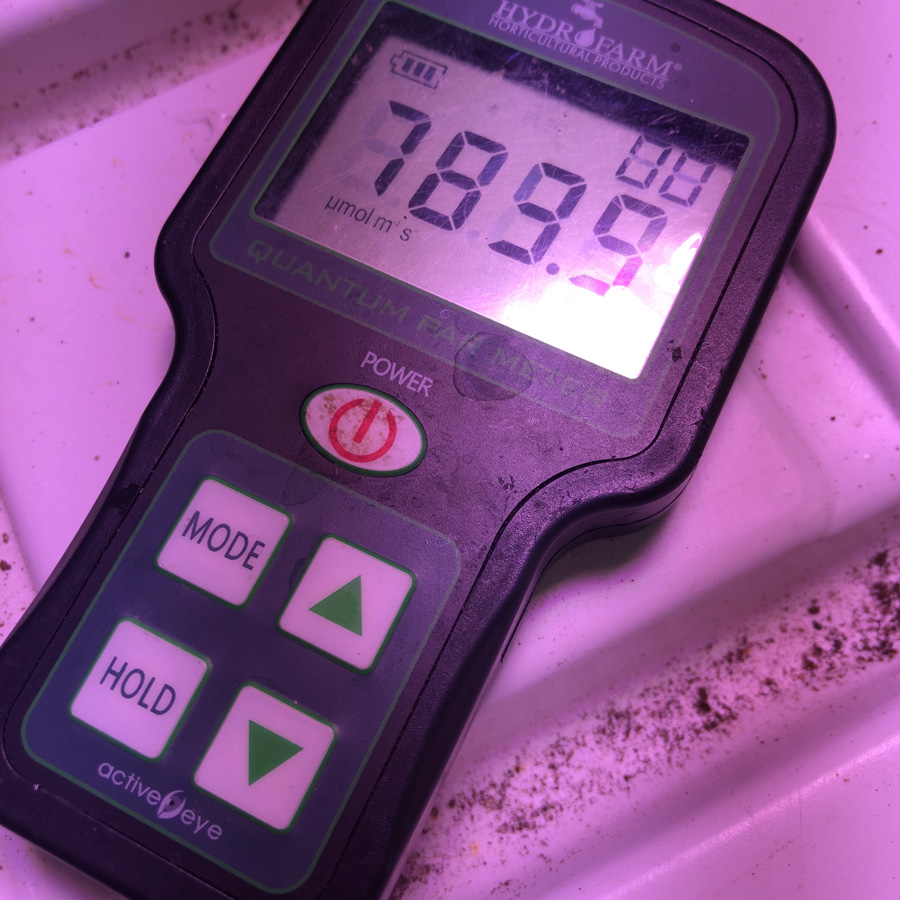
Watt per Watt Results
Watt per watt in comparing HPS to LED, growers typically do much better with LED. However in comparing uMols/sec/m2 to uMols/sec/m2, HPS can appear to be the winner in terms of flower and fruit yields.
This just means you need more uMols/sec/m2 of LED to accomplish similar or even better results–the good news being while still using less power to do it while reaping other benefits.
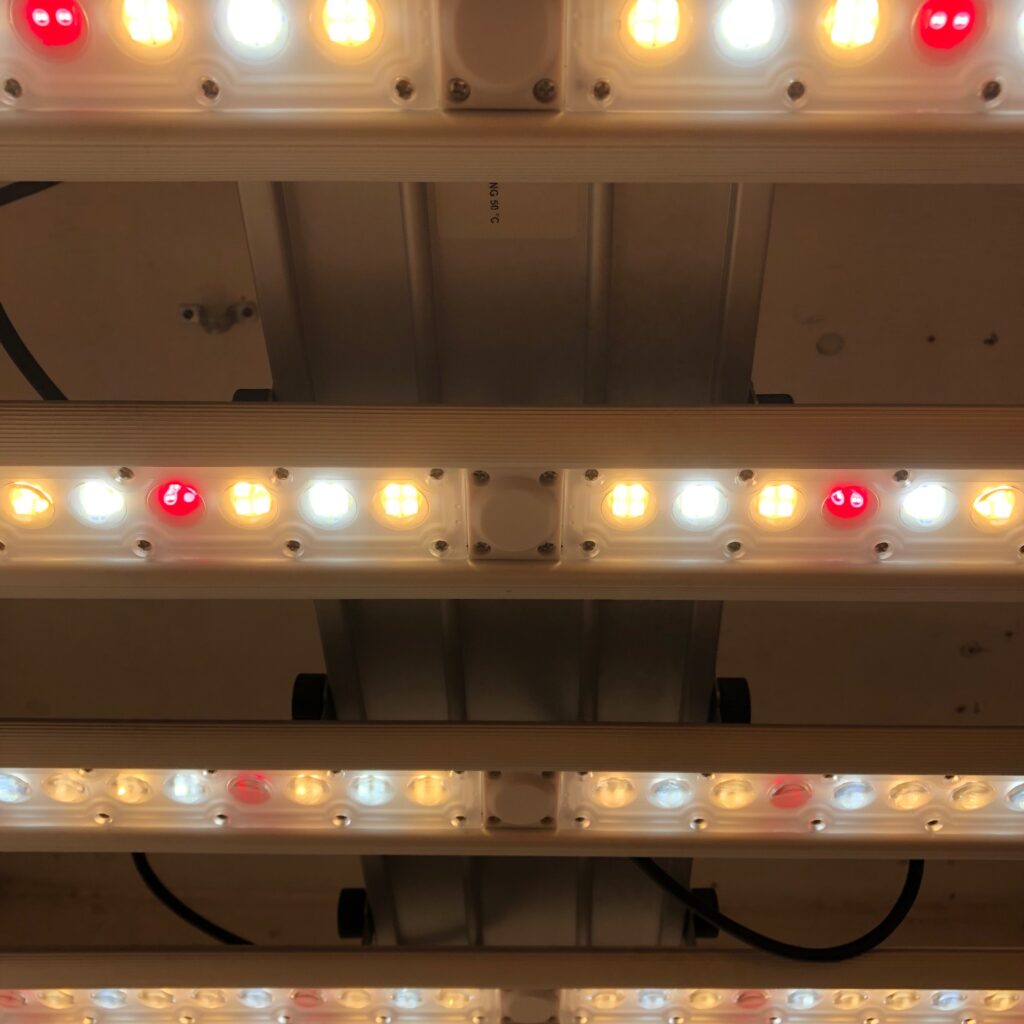
Above: These LED light bars combine 4 different LED chips to optimize uMols/sec/m2 per Watt of power used
Green Light, It’s Important for Plants
Green light, around 555 nanometers to be specific, is arguably only beginning to be well understood by savvy indoor farmers relying on artificial light as a sole source of illumination to drive crop development. Green light will not interrupt the dark cycle in flowering plants–that’s red and far red light. As such, it may seem like plants aren’t using green light. Fact is, they are. Just in ways we may not completely understand.
In practical terms intense green light may be important when growing larger plants where having light reach lower flowers and fruits is important. Strong green light may travel through plant leaves, while not necessarily being “absorbed” in the conventional sense, ie the sieve effect versus detour effect (study HERE) . This behavior means that lower flowers and fruits are still “excited” by the light source even though they may be further away and even shaded by foliage and upper plant development.
Hence, HPS growers can still harvest good sized flowers and fruits with reasonable density even lower down on larger plants. In comparison, most LED growers will find they are getting their best quality and yield potential in the first 18 inches of plant canopy, nearest the LED light source.
Additionally, the “heat” given off by HPS lights (long wave light) further excites plant development, especially where taller plants are concerned because it travels well.
While the green light and heat may sound like benefits they are not when considering the extra power that is used to both generate the extra high levels of intensity needed and the equipment and electricity needed to manage the higher levels of heat.
Pests Love HPS
In side by side comparisons conducted in a controlled growing environment it can become evident that common crop pests like spidermites will choose to attack plants under HPS versus LED. Seemingly, the most likely reason is that green light excites insect activity. When coupled with plants that tend to be more heat stressed under HPS, the LED grown plants do not make such easy targets–the same may also be said of incidence of powdery mildew.
How To Take Advantage of Your LEDs
One of the first things you may notice about using LED grow lights if accustomed to growing under HPS is that your grow room will not carry as high a heat load. This often means a cooler growing environment with more humidity in the air. Air Conditioning or Exhaust fans may not cycle as frequently or with the intensity associated with HPS. This is a great quality growers tend to love when switching to LEDs.
However, a cooler and less intensive room may have your crop taking it a little too easy at times. It’s up to you to train your plants to work at higher levels while taking care not to stress or harm them. Plants with a higher metabolic rate will potentiate growth rates and yields.
Warmer Temps
Accelerating your crop metabolism using LED grow lights is most easily accomplished by raising your cooling thresholds just a few degrees. For best reference, use a laser temperature gun to note leaf temperature at the top of your plant canopy when you know your plants are growing their best. To accomplish this same temperature using LED grow lights versus HPS you can usually run the air a little warmer in the growing environment because the leaf surface is getting less heat from the light source with cooler running LED grow lights.
Under LED grow lights you may also increase air circulation, ie higher circulation fan speeds or oscillation. Because the air tends to be less hot and dry under LEDs, this will further help encourage more mineral and water uptake without over stressing plants to the point of doing more harm than good.
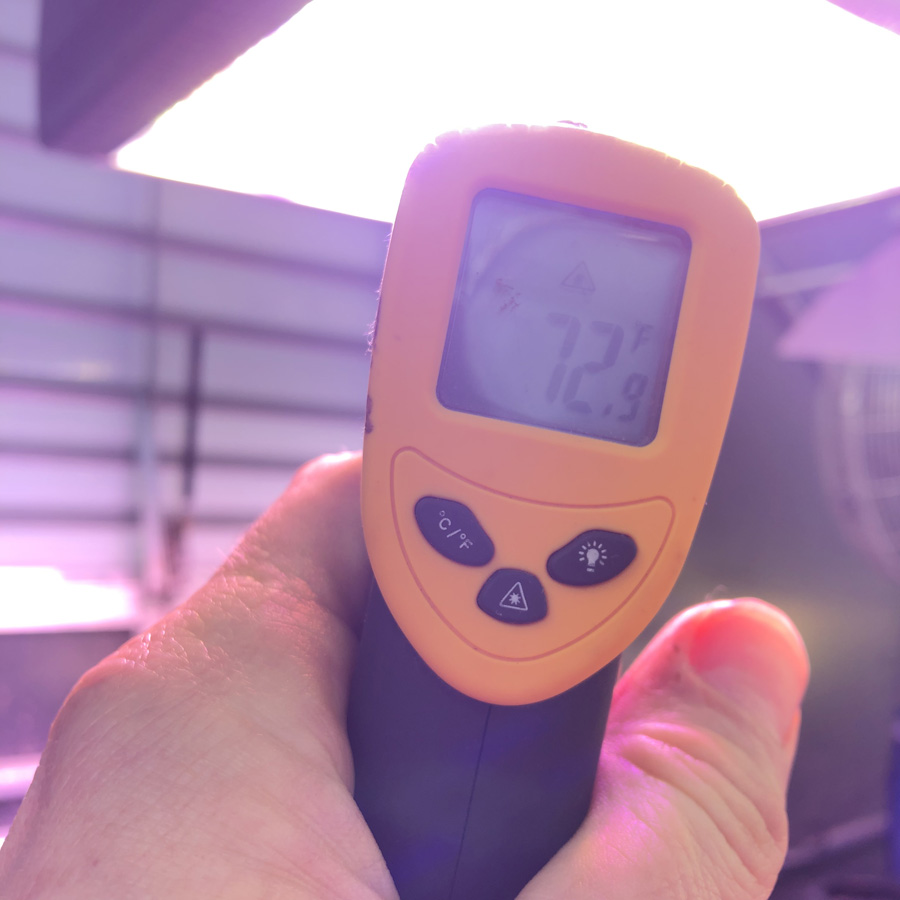
Higher Lighting Intensities
Using LED grow lights it is recommended that growers add about +25% lighting intensity to their target values versus HPS. For aggressive development in flowering for heavy and dense blooms or fruiting 1200-1600 uMols/sec/m2 provides heavy yields with exceptional quality when other environmental factors and good crop nutrition are being met. Even though you may need higher light intnesisties, remember that you are still using less power, ie better uMols/sec/m2 per Watt using LED grow lights versus HPS while at the same time enjoying the many benefits modern LED grow lighting offers.
Feed Stronger
In the average rockwool cube or slab drip table under HPS lighting, feed strengths in flowering may peak at around 2.0 to 2.4 EC. When using LED grow lights this value can typically be increased to 2.4 to 2.8 EC for peak bloom without causing stress or harm to plants. The results are heavier yields and a marked increase in the density and harvest weights of individual flowers or fruits. Adapt your feeding schedule with care to help avoid stressing plants.
Stay Compact
Very few LED grow lights can throw usable grow lighting with strong intensity more than several feet, noting that the AVici LED grow light from Revolution Micro is a rare exception. If you are using UV diodes in the your LED chip arrangements, after 18 inches distance or so from the source benefits diminish quickly. Keeping the plant canopy trimmed at the bottoms and harvest heights less than two and a half feet tall is an easy way to ensure that your harvest quality is homogenous from top to bottom of your plants. You don’t necessarily need to have more plants–individual plants can be trained for lateral branching. As supplemental lighting in a greenhouse, LED grow lights will do fine with taller crops. Indoor farming dictates more compact plants for maximum efficiency and results.
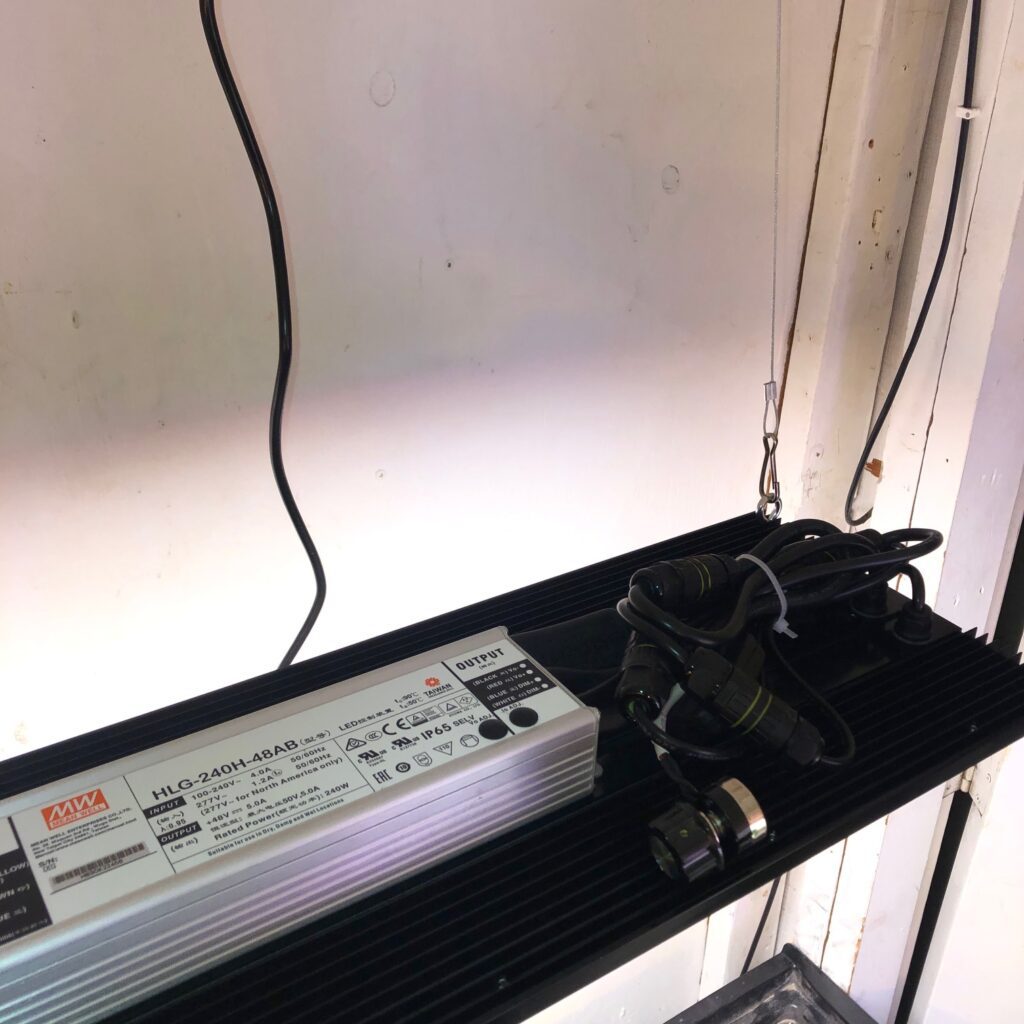
LED Grow Light Evolution
Similar to computer technology, LED grow lights are developing at an exponential rate. Each new generation of grow lighting increases uMols/sec/m2 per Watt efficiency while offering growers valuable new tools like spectral tuning to optimize lighting spectra for each phase in the development of crops. Also, with using LED grow lights becoming more widespread, there is a reduction in purchase costs and wider selection–more great news for growers.
Special Thanks to G. Richter & M. Wolfe for their time in developing this article
The post Using LED Grow Lights appeared first on GROZINE.


